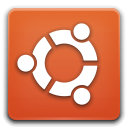Ubuntu 12.10 ‘Quantal Quetzal’ is not due for release until October, here at Unixmen we felt now was a good time to have a sneak peek at what will be making its way into the new release.
The main talk from developers seems to be around what to do with Nautilus, GNOME’s default graphical file manager. While GNOME developers continue to develop Nautilus, Ubuntu developers are deciding whether to include the new Nautilus version 3.6 in the next Ubuntu release. Ubuntu developers are claiming there is lack of co-operation with GNOME developers and that forward thinking is not on the same level of that of Ubuntu developers. And as a result, Ubuntu is currently looking to ship with an older Nautilus version 3.4. More recent versions will be available in the repositories, but just not shipped with Ubuntu 12.10 out-of-the-box. There are reports that Linux Mint developers are looking to fork or at least throw their support behind a fork of the Nautilus file manager and take it in a different direction. Much the same way Linux Mint has supported the MATE desktop environment fork of GNOME 2 code base and Cinnamon desktop environment fork of GNOME Shell code base. Watch this space carefully as things could get very interesting in the coming months. t’s an interesting scenario and we’ll be sure to follow this one closely in future Ubuntu 12.10 news updates.
Another interesting revelation has been the removal of Unity 2D from Ubuntu 12.10. This news seemingly came as a shock to Ubuntu users. And particularly users of the 2D version on the Unity desktop environment. Unity 2D was intended to be a lightweight version of the Unity desktop environment, which is primarily run with a 3D backbone. As of Ubuntu 12.10, users who do not have enough graphical power to run a full Unity environment with full 3D capability, will instead be presented with an interface powered by OpenGL rasterizer LLVMpipe. It basically removes the requirement for Ubuntu to ship with 2 different versions of Unity. And rather ship the one version with slightly different backbones, depending on a users’ system capability. A smart and efficient move I believe.
The next change could easily be missed by anyone that is not paying attention to the finer details of the GNOME Classic desktop environment. Users of GNOME Classic session will rejoice when they discover that the beloved Ubuntu icon has been reinstated into the Application Menu. As small a change as this may sound, GNOME Classic users were up in arms when the icon was removed in the Ubuntu 12.04. GNOME Classic users are sure to be pleased with the small yet seemingly important decision to bring back the icon!
But the most exciting change to date is a feature called ‘Previews’. In a nutshell, current and previous versions of Unity present only one option of what to do with files when viewed through Dash; ‘Open’. The new ‘Previews’ feature sports a new preview of a given file when viewed within Dash in Unity. For example, if you right-click on a media file you will be presented with a preview of the file within Dash itself. ‘Previews’ is not limited to Dash though, it will be extended to Ubuntu One and Ubuntu Software Center in future iterations. Exciting stuff if you’re in to all the graphical eye candy. Amateur and home developers will also be given the chance to build upon the technology via an API. ‘Previews’ is in still under development, so working examples are quite scarce at this stage.
Even in the early alpha stages of development that we’re seeing with Ubuntu 12.10, it looks far from a boring release. Developers are making a real effort to improve on current technology and implement new exciting and essential features to make productivity easier and more appealing for the Ubuntu user and new users alike. We’ll continue to follow Ubuntu 12.10 development up until it goes gold in October and bring you all the latest news and updates on the upcoming update from Canonical.





